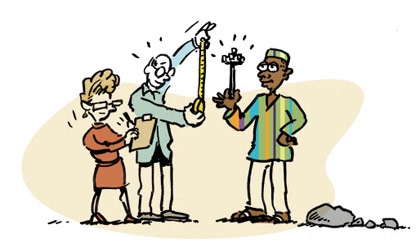Are North Americans just a bit too comfortable to design products for the next century? Sure, we can readily see the need for a latte maker that gets firmer foam from organic soy milk, or a computer mouse that lets us spend 4 more hours a day at our Dickensian digital drudge-stations. But is this what the world really needs right now, when a billion people are living on less than $2 a day?
These are the questions that go through my mind as I read the AfriGadget Blog, a showcase of bootstrap product design (sometimes using pieces from actual boots) as practiced by innovators all across the African continent. A team of blog contributors and readers contribute pictures, videos and stories to this fascinating blog that are “a testament to Africans bending the little they have to their will, using creativity to overcome life’s challenges,” according to the editors.
Consider the KVA flexible portable solar kit. Taking advantage of the fact that Kenya’s ‘Boda-Boda’ (Border to Border) bike taxi riders are out in the sun virtually all day, local inventor Dominic Wanjihia came up with the idea of a vest that holds a lightweight, flexible solar recharging panel. Thus equipped, a rider always has a charged cell phone, a ready emergency light for late trips home, and an optional phone charging service for his clients, all with carry-along theft protection built-in.
Wanjihia’s ‘flat’ parabolic mirror is equally innovative, using thin ‘waste’ strips of mirrored acrylic to make a portable, low-cost solar collector. It’s part of an ongoing project with Nairobi University, where Wanjihia is studying, and MIT’s FabLab. Most of these sparks of ingenuity are less the brainchildren of academia, however, and more the simple (and not-so-simple) responses to immediate needs in the community, invented on the spot using found materials.
From rock hammers made from old car gears to volcanic steam water distillers the sheer creativity of people meeting their daily needs in new ways is nothing short of inspiring. Scroll down through the blog; you’ll find videos of ingenious Africans making sophisticated bicycle repairs out of portable, throw-away items; others finding new uses for old car batteries; and even the most practical, portable battery-operated juakali lamp, the perfect solution for a Nairobi blackout.
As business grapples with economic recovery and landfills bulge with ‘waste’ material, this sort of creative thinking -- born from necessity – could come in pretty handy here in the ‘developed’ world as well.
Perhaps, instead of touring famous European design factories, product designers should take a trip further south.

